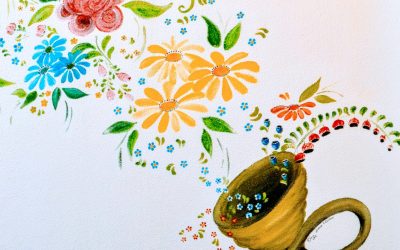Main ideas
- Psychoeducational approaches to art therapy, particularly, Behavioural, Cognitive, Developmental and Adaptive approaches are most relevant for supporting adults with learning disabilities.
- Individual and group settings for art therapy interventions offer different benefits for adults with learning disabilities. Individual settings provide more undivided attention from the therapist, so a therapist/ client alliance is quickly established. Group settings provide a sociable environment in which to form connections with like-minded peers sharing the same experience- which boosts self-esteem, and establishes a purpose and a sense of belonging, as well as having developmental benefits.
- A hybrid environment provides the benefits of both analogic and digital environments, fostering ongoing social connection and engagement, and face-to-face human interaction.
- Art therapists should select the appropriate tools for artmaking based on their clients’ needs, ages, physical and mental abilities, and the reasons they are attending art therapy.
Learning Outcomes
On successful completion of this Learning Unit, the participants will be able to:
- Describe the most relevant theoretical approaches and methods of art therapy
- Identify similarities and differences between individual and group interventions in art therapy
- Define the similarities and differences between analogic, digital and hybrid environments for art therapy interventions
- Select the most effective artistic resources for carrying out the different art therapy interventions
- Lectures 6
- Quizzes 1
- Duration 10 weeks
- Skill level All levels
- Language English
- Students 8
- Assessments Yes






